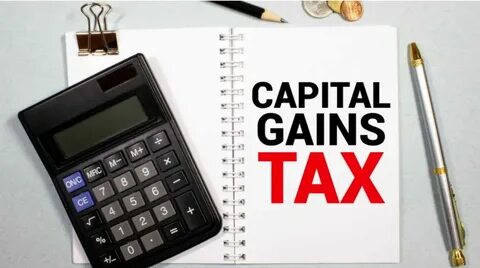Managing money is a very important skill, although financial education is also an area where most people face great challenge. With growing talks about student debt, retirement planning, and personal finance, it is almost evident that everyone should learn how to manage their money. The future of financial education will then revolve around diversifying access to financial literacy and preparing the people to make wise financial decisions. In this way, by using modern technology, innovative approaches, and inclusive practices, we can bridge the gap between financial knowledge and practical application.

Why Financial Education Matters?
Financial education is the basis for knowing how to manage money. It goes beyond just budgeting or saving; it means learning how to invest, managing debt, and assessing risks. According to a 2022 FINRA report, only about 66% of Americans could answer over three of five financial literacy questions correctly. That summarizes the deficit in the basic understanding of finance. This manifests through the high credit card debts and insufficient retirement savings plus the lack of emergency funds.
Appropriate financial education helps individuals:
- To avoid debt traps: Experience of the rates of interest and loan terms keeps the big errors at bay.
- To plan for the future: Knowing what to do with retirement accounts and investments results in more effective long-term planning.
- To manage financial crises: The better a person understands financial concepts, the more they can afford to handle unexpected expenses.
Challenges in Traditional Financial Education
The old-fashioned methods of instructing finance in schools, mainly textbooks and lecturing, do not really interact well with the students or relate to the real-world effects of their choices. Finance classes are often electives, so it is left up to the people to figure things out for themselves concerning money handling. This leads to substantially uneven financial skills, especially for low-income groups who may not have access to financial aid.
However, there is a tendency to focus more on the theoretical without demonstrating practical applications. For example, students can learn how to calculate compound interest but may not apply it in terms of credit card debt or mortgage loans. This disconnection keeps learners from using what they learned in real life.

The Use of Technology in Finance Studies
It is giving the game a flip and changing the landscape through how people learn about money since, of course, financial education becomes more available and more fun with digital tools and their availability online. Now, here is exactly what technology does it:
- Online Courses and Webinars: Financial literacy courses are also available on Coursera, Udemy, and Khan Academy among others, where the learner can proceed at their own pace. These programs vary from the ABCs of budgeting to complicated investment strategies. In 2023, 60% of millennials have reported to take an online financial literacy course. They say, there is every indication that online learning is here to stay. Many of these services offer free or low-cost courses making financial education much easier to access.
- Financial Apps and Tools: Apps such as Mint, YNAB (You Need a Budget), and Robinhood make it easy for a user to track expenses, set budgeting, and invest. These give practical experience in money management. For instance, Mint allows the ability to set financial goals and monitor how much you are already achieving. Robinhood offers commission-free trading that makes investment more accessible to beginners who do not have much money. With 80% of smartphone users accessing at least one financial app in 2023, the tool is very important because it teaches children real-life money skills.
- Gamification of Financial Learning: Apps like Zogo and Habitica gamify learning about personal finance. In a gamified app, users receive rewards for completing specific educational tasks or achieving specific financial goals. Learning about personal finance this way not only makes it more enjoyable, but also engrains good habits about managing finances in the minds of the learners. A 2021 survey conducted by Zogo, discovered that users learning through gamified financial education were over double as likely to exhibit improved behaviors regarding finance in comparison to those who learn through traditional methods.
Incorporating Financial Literacy into the Curriculum
There are valid grounds for incorporating financial education into school curriculums as one of the initial steps to literacy in this subject. Some states, such as Utah and Virginia, require a personal finance course to be completed before one graduate from high school. Research shows that adults who took financial education in high school are likely to save more, budget better and obtain a healthier interest rate on credit than those adults who did not have the privilege of completing school-based courses.
However, it should not be limited to high school students alone. The financial education can start from elementary school, teaching simple lessons about saving money and what is wanted as opposed to what is needed. The college graduate will then be educated with more complex ideas, such as student loans, credit scores, and investing. Such multi-layered approach can help prepare young people for any responsibilities that they will be expected to carry when they join the workforce.
Measures of Financial Literacy Effectiveness
Improved Credit Scores: In the 2019 study on the requirement of states in financial literacy, a mean credit difference of 20 points was reported between the course-takers and their peers among the young adults.
Fewer Student Loans: According to a 2020 survey by the TIAA Institute, students who receive high school education in finance are 15% less likely to have taken high levels of student loans than students with no form of financial education.
Saver Rates: According to FINRA, people who have high scores on financial literacy are over double as likely to have an emergency fund in possession compared to someone with low scores.
Role of Employers for Financial Education
An employer can also significantly contribute to this positive change by offering employee education programs. Businesses could easily make available a variety of tools, such as financial wellness programs, retirement planning workshops, or access to financial advisors for use. This supports employees while also enhancing workplace productivity because of the detriments associated with the impact of financial stress on worker engagement.
In 2022, a study by PwC, established that 54% of participants working in employee-sponsored financial wellness programs could be more confident about their future finances. Besides this, firms and companies that were providing financial education recorded a decline of 25% in the stress that employees were facing concerning money and finance.
Future Outlook
The bottom line for the future of financial education is being accessible to all in managing money. Technology helps reach out, it ensures incorporation in school curriculums and is extended to make available to accessible programs so that ultimately an ability to take charge of personal funds is enhanced. The more people who are empowered to understand and know how to manage money, the more within reach financial success will be. In this way, making financial education accessible to so many people will create a society that can make well-informed decisions concerning money and lead to the financial stability.

This Photo by Unknown Author is licensed under CC BY





